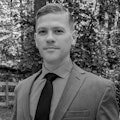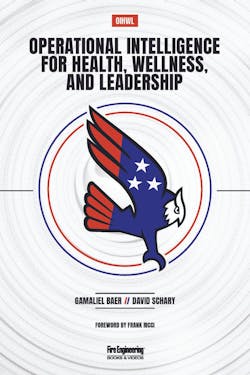The United States seems to be pulled into extreme positions about almost every topic these days. Whether a social issue, such as race, religion or politics, or an individual issue, such as exercise or diet, the need to find a balance is more important than ever. The reason: The extremes of any issue are where you find deficiency or excess, which are the domains of vice. In contrast, virtue is found somewhere in the balance between the two extremes.
Aristotle explained the importance of understanding virtue almost 2,400 years ago, and his teaching is still valuable today. This is particularly pertinent as the U.S. fire service becomes more interested in health and wellness efforts, particularly heart attack, cancer and suicide risk reduction.
Limited education
After accounting for genetic factors, one of the keys to health is finding a balance between two extremes with regard to lifestyle factors. Many firefighters found that balance and made their way through a career of service and are living out their retirement in a healthy way. They are doing this despite the fact that health and wellness information in the fire service is far and few between.
Unfortunately, far too many firefighters get injured or ill or die on the job because of a lack of balance in their physical or mental health. The tragedy here is that the fire service openly claims that heart attack, cancer and suicide are job related, yet the efforts to educate firefighters on how to reduce the risk of these three outcomes have yet to become widespread and comprehensive.
An adoptable curriculum for the fire service
Until 2024, no adoptable model curriculum was available for fire departments to teach foundational health and wellness concepts that educate on heart attack, cancer and suicide. Even though national-level fire service organizations, such as the International Association of Fire Chiefs (IAFC), the International Association of Fire Fighters (IAFF), the National Fallen Firefighters Foundation (NFFF) and NFPA published guidance about physical and behavioral health and wellness that departments should teach, the adoption of that guidance has been slow. Part of the problem is that there was no educational curriculum that a department could adopt and share with its members. Another part of the problem is that a lot of effort is put into occupational factors that can be engineered, not lifestyle factors that must be taught and adopted.
As of 2022, the Public Safety Officers Benefits Act includes suicide as a covered fatality in addition to heart attack and stroke. Additionally, a large majority of states enacted some type of presumptive disease law for firefighters.
Although it’s great that there’s financial support for firefighters who die or get ill or injured on the job because of heart attack, cancer or suicide, it would be much better if firefighters could avoid those illnesses, injuries or deaths. Further, the Occupational Safety and Health Administration (OSHA) maintains an overarching employee mandate that employers must educate their employees on how to prevent illness, injury and death on the job. This same stipulation is contained in every state law that must meet or exceed OSHA as well as within NFPA 1500: Standard on Fire Department Occupational Safety, Health, and Wellness Program and NFPA 1583: Standard on Health-Related Fitness Programs for Fire Department Members. Departments that don’t offer some sort of education on how to reduce the risk of heart attack, cancer and suicide might increase their risk of a lawsuit by the family of a fallen firefighter.
In January 2024, a four-year book project with the NFFF, which sought to fill the literature gap of fire service health and wellness, finally came to fruition. “Operational Intelligence for Health, Wellness, and Leadership” provides an adoptable health and wellness curriculum that particularly focuses on heart attack, cancer and suicide.
Book overview
The book has five chapters. The first chapter is on resilience.
As any topic gains momentum, buzzwords that are related to that topic increase. “Resilience” and “health and wellness” have become buzzwords, so the book spends the time to dive into those words, explores how they fit into Aristotle’s philosophy, and aligns them with the strategic guidance from IAFC, IAFF, NFFF and NFPA on health and wellness education.
The first chapter also explains the Change Assessment Model, which was developed using Aristotle’s philosophy on responsibility, which is used to organize the other four chapters of the book. The model provides a way to assess where an individual or organization must change to alter its desired reality. For this reason, the model also provides a framework for how to break learning topics into appropriate sections that follow Aristotle’s logic on how to be fully responsible for one’s actions.
The second, third and fourth chapters apply the Change Assessment Model to the topics of physical wellness, nutritional wellness and mental wellness, respectively. The three chapters not only show the reader how to apply the model as a framework for learning but also tie each of the chapter topics to heart attack, cancer and suicide risk reduction, with heavily cited research from both the fire service and the general public. These three chapters each have three parts that correlate to the parts of the Change Assessment Model.
The fifth chapter is on leadership, which has become another buzzword. The concept of operational intelligence for health, wellness and leadership challenges the entire corpus of leadership literature by providing an objective—and, therefore, assessable—definition of leadership that’s distinguishable from management.
The concept of leadership often is used simply as a sexy synonym for doing management (a verb) or to describe executive level management or decision-makers (a noun). The fifth chapter uses the Change Assessment Model as a framework to organize the information into three parts, starting with defense of an objective definition of leadership—distinct from management—in a way that’s identical to how NFPA distinguishes between a fire engine and an aerial apparatus. Namely, the approach is to identify the necessary and sufficient components of what constitutes leadership and management and then compare the two. The reader is provided with an algorithm that maps how actions can be either leadership or management and what the path to doing leadership requires based on the definition.
Additionally, the chapter closes the loop with where the book started and explains how leadership ties directly to resilience and health and wellness. Also included is an explanation for how to go from leadership at the individual level to leadership at the organizational level without breaking the principles of the leadership definition.
Model overview
When you respond to the scene of a fire, a rescue or an emergency medical call, there’s a rough algorithm that you have in your head to establish command and give yourself the best chance at success. That algorithm is something like the following: 1) scene size-up, 2) identify the issue at hand, and 3) consider adding (or subtracting) resources. These three steps are generally equivalent to the three main steps of the Change Assessment Model that’s derived from Aristotle. Aristotle explains that to assess someone’s behavior and identify areas to potentially address, you must know the following: Does the person understand the circumstances? (similar to scene size-up); Does the person know right from wrong? (similar to identify the issues at hand); and Does the person have the ability to act in the way that they need to act? (similar to consider adding or subtracting resources).
Aristotle is attributed with saying, “It is the mark of an educated mind to be able to entertain a thought without accepting it.” He was very interested in identifying opposites and understanding the application of opposing forces with both moral issues and practical issues. When it comes to the health of firefighters, the Change Assessment Model can be used to identify opposing forces and successfully navigate those forces to find a balance for firefighters’ physical and mental health.
Good habits
After accounting for genetic issues, health comes down to a leadership issue. Aristotle is attributed with the idea that “We are what we repeatedly do. Excellence, then, is not an act, but a habit.” He meant that excellence comes from building good habits, not from one single act. However, people don’t form habits out of thin air.
The fire service seems to understand that habits for donning and doffing gear are important. Departments seem to recognize that there’s a certain amount of education and training that must occur for firefighters to build proper habits for their job. It’s common to hear firefighters say that for firefighting, you don’t rise to the occasion; you fall back to your level of training. In other words, the habits that you build for responding to emergencies will get you to success.
Until the fire service understands that the same is true for health and wellness, we shouldn’t expect things to improve significantly.
About the Author

Dr. Gamaliel Baer
Dr. Gamaliel Baer is a firefighter/EMT and special operator for Howard County, MD, Fire and Rescue. He also serves as a U.S. Coast Guard Reserve officer and has volunteered with the National Fallen Firefighters Foundation since 2017. Baer is an adjunct faculty member at Johns Hopkins University for the Master of Science in Organizational Leadership program, where he teaches leading and managing change. He is a Certified Personal Trainer and Certified Health Coach through the American Council on Exercise and earned the Chief Training Officer designation through Center for Public Safety Excellence.
